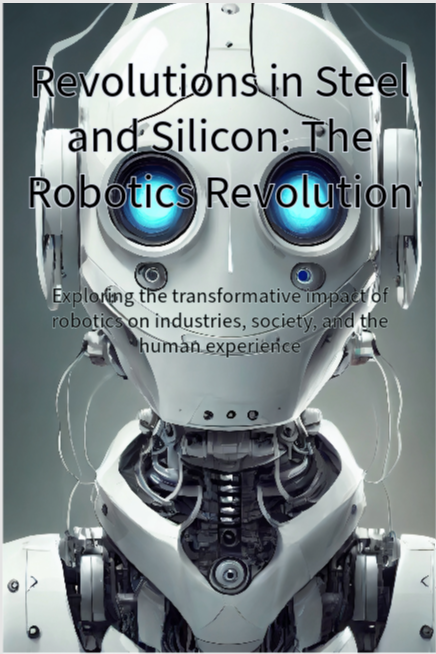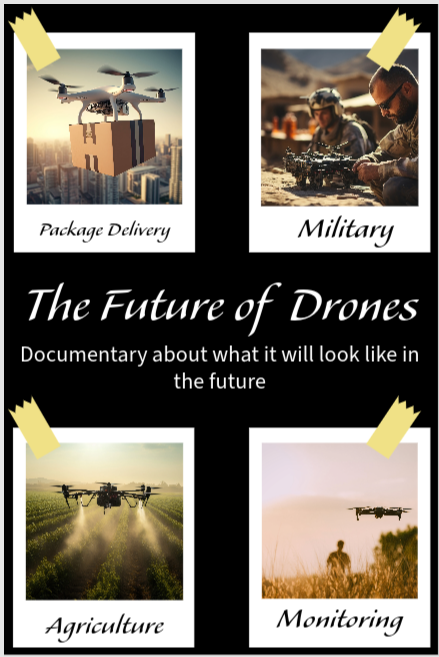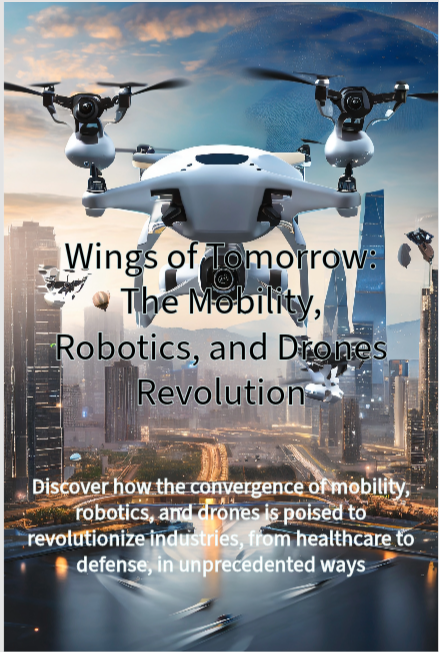I crafted the Law infographic through a step-by-step process. Firstly, I utilized Adobe Express, a user-friendly design tool, to build a personalized template that was suitable for presenting the information about the subject of Law. In order to become proficient with this software, I made use of instructional videos specifically created for Adobe Express. These tutorials helped me to gain a solid grasp of the tool's features and functionalities, ensuring that I could make the most out of it.
As I delved deeper into my project, I spent a significant amount of time experimenting and tinkering with Adobe Express. Through this hands-on exploration, I learned how to navigate the platform effectively, manipulate visual elements, and optimize the layout of my infographic. This trial-and-error approach allowed me to refine my skills and gain a better understanding of how to use Adobe Express to create a visually appealing and informative infographic that effectively conveyed the subject matter of Law. The process of combining creativity and technical skill, along with diligent practice, culminated in a finished product that successfully presented the complex topic of Law in a visually engaging and informative manner.



For the second artifact for the project I was tasked with creating the covers for the documentary. To be honest, this was significantly more difficult than I expected and I found myself to be humbled. I created three covers and this is my break down:
1st Cover: For the first cover, I relied on stock images from Adobe and handled all the formatting myself. Despite its challenges, it took me approximately 45 minutes to complete, and it was not the most formidable task I've taken on.
2nd Cover: Creating the second cover was a markedly more intricate process. I harnessed the power of AI, employing prompt engineering and prompt refining techniques to craft the perfect design. This endeavor turned out to be the most demanding of the three, consuming about two hours of my time as I searched diligently for the right composition. I also leveraged Firefly, an Adobe extension, which required considerable patience and a fair amount of experimentation.
3rd Cover: By the time I tackled the third cover, I had become noticeably more adept and efficient with the technology at my disposal. I was pleasantly surprised to find that I could complete this cover in less than 30 minutes. My interactions with AI were smoother, requiring just a couple of tries to get the cover I wanted, without extensive trial and error. Even the text composition was AI-driven. This streamlined process not only made it faster but also increased the overall quality of the cover. I now feel confident that I can create designs with greater speed and improved quality thanks to these technological tools.
My Part for the interim report:
Our classroom discussions often revolve around the fascinating world of artificial intelligence (AI) and how it can be applied to our various projects. To make this more relatable, we've been using real-life examples. One recent discussion that really grabbed our attention was about autonomous vehicles and the moral decisions they might have to make. We used the "Moral Machine" experiment from 2016 as a case study. In a nutshell, this experiment asked us to imagine a scenario where an autonomous car had to choose between swerving off the road and potentially harming its passenger, or staying on course and risking the lives of several pedestrians.
But our AI exploration didn't stop at discussions. We also got hands-on experience through some classroom exercises in prompt engineering. These exercises were all about refining our questions and learning how to use AI effectively.
Exercise 1 was all about developing a prompt that represents a particular persona. This helped us get better at asking the right questions, which is crucial when working with AI.
Exercise 2 took us into the world of website design. We had to create a website for a local artisanal bakery and make it appealing to potential visitors. To do this, we had to understand the bakery's customers—things like their demographics, online behaviors, and what they'd expect from a bakery website. This exercise taught us how AI can help design and customize content for specific groups of people.
Exercise 3 was like a journey through time. We had to pick a technological innovation, like smartphones or electric cars, and trace its history from the beginning to where it is now. This involved creating a timeline of the major milestones in its evolution, and it showed us how AI can help organize and present historical data.
These prompt engineering exercises improved our skills in refining questions, which is crucial when using AI. We learned how to choose the right keywords and techniques to get the results we wanted from AI.
In a nutshell, our journey with AI and project work has been both exciting and enlightening. We've talked about the ethics of AI in autonomous vehicles, which really made us think. We've also seen how AI can be practically applied in projects through these exercises. As we keep exploring the world of AI, these experiences are like our guiding stars, helping us make the most of this incredible technology in our academic and professional endeavors.
My reflection:
To craft this report, I began by revisiting my notes and the instructions from previous assignments. I took a moment to reflect on my past projects, considering the lessons and insights gained from them. In the process, I made revisions and improvements to certain sections of those earlier projects, ensuring that this report benefited from the knowledge and experiences acquired over time.
Expert interview:
Questions:
1. Given your extensive experience in supply chain management, how do you see emerging technologies like robotics and drones reshaping the logistics and supply chain landscape in the context of mobility?
2. In what ways are companies leveraging mobility, robotics, and drones to optimize supply chain operations and improve efficiency, and what challenges do they face in implementing these technologies?
3. What role do you see predictive analytics and data-driven decision-making playing in supply chain and logistics, particularly with the integration of robotics and drones? How do these technologies impact forecasting and planning?
4. Could you elaborate on the specific challenges and opportunities in developing risk evaluation models for supply chains that incorporate mobility, robotics, and drones, and how they influence strategic decision-making in organizations?
5. With your background in marketing and revenue management, how do companies market and monetize their services related to mobility, robotics, and drones, and what are the unique considerations in pricing and revenue optimization for these technologies?
6. As the use of drones for last-mile delivery and autonomous vehicles becomes more prevalent, what do you see as the main financial and operational challenges for companies in this space, and how are they addressing them?
7. From your experience, how can organizations effectively balance the financial investments required for implementing robotics and drone technologies with the expected returns, especially in the context of mobility solutions?
8. With your expertise in operations planning and scheduling, how do you envision the integration of autonomous vehicles and robotics impacting production and operations planning, and what financial considerations should companies be aware of?
9. As companies explore capacity planning in the context of mobility solutions, robotics, and drones, what financial strategies can they employ to optimize resource allocation and manage fluctuations in demand?
10. Lastly, could you share insights into the future of supply chain management and logistics with the continued advancement of mobility, robotics, and drones, and how should organizations adapt their financial strategies to stay competitive in this evolving landscape?
Responses:
1. Emerging technologies like robotics and drones are reshaping the logistics and supply chain landscape in the context of mobility by enhancing efficiency and flexibility. Robotics can automate various aspects of warehousing and material handling, while drones enable faster and more accurate last-mile deliveries. These technologies reduce lead times and operational costs, making supply chains more agile and responsive to changing customer demands.
2. Companies are leveraging mobility, robotics, and drones to optimize supply chain operations by automating repetitive tasks, reducing human error, and improving the accuracy of data collection. However, implementing these technologies can be challenging due to the initial capital investment, regulatory compliance, and the need for specialized training and maintenance of these systems.
3. Predictive analytics and data-driven decision-making are vital in supply chain and logistics, especially with the integration of robotics and drones. These technologies provide real-time data on inventory, transportation, and production, allowing for better forecasting and planning. Companies can make more informed decisions about inventory levels, transportation routes, and production schedules, ultimately leading to cost savings and improved efficiency.
4. Developing risk evaluation models for supply chains that incorporate mobility, robotics, and drones presents both challenges and opportunities. The main challenge is understanding the unique risks associated with these technologies, such as equipment failure, data security, and regulatory changes. By developing robust risk evaluation models, organizations can make more informed strategic decisions about their supply chain processes, insurance coverage, and contingency planning.
5. Marketing and monetizing services related to mobility, robotics, and drones require companies to highlight the value and efficiency improvements these technologies bring. Pricing strategies should consider the cost savings achieved through automation and the ability to offer faster and more reliable services to customers. Companies should also be mindful of the potential for market disruption and competitive pressures in pricing and revenue optimization.
6. The main financial and operational challenges for companies using drones and autonomous vehicles for last-mile delivery include regulatory compliance, infrastructure investment, and the need for skilled operators. Companies are addressing these challenges by collaborating with regulators, investing in infrastructure, and providing comprehensive training programs.
7. Balancing the financial investments required for implementing robotics and drone technologies with the expected returns involves a careful cost-benefit analysis. Companies should consider factors such as automation's impact on labor costs, improved accuracy and efficiency, and the potential for market share growth. It's essential to develop a clear financial strategy that justifies the initial investments and outlines the expected returns over time.
8. The integration of autonomous vehicles and robotics impacts production and operations planning by enabling greater flexibility and responsiveness to changing demand. Companies should consider factors like the speed and accuracy of these technologies, which can impact production efficiency and lead times. Financial considerations should include the cost of technology integration, training, and maintenance.
9. Companies exploring capacity planning in the context of mobility solutions, robotics, and drones can employ financial strategies to optimize resource allocation. This includes assessing the scalability of these technologies and their adaptability to fluctuations in demand. By carefully managing capacity, organizations can minimize operational costs and optimize resource allocation based on current and anticipated demand.
10. The future of supply chain management and logistics with the continued advancement of mobility, robotics, and drones will be marked by increased automation, enhanced agility, and improved customer service. Organizations should adapt their financial strategies by allocating resources for technology adoption and ongoing training, staying informed about regulatory changes, and continuously evaluating the return on investment for these technologies to remain competitive in the evolving landscape.
Reflection:
Using the AI, I inputted the comprehensive backgrounds of my interviewees, allowing the system to generate a set of questions tailored to their specific expertise. This automated approach not only saved time but also ensured that the questions were finely tuned to the subjects' areas of knowledge. What further streamlined the process was the ability to curate and modify questions as needed, discarding those that didn't align with the focus of the interview. This flexibility allowed me to maintain the interview's purpose and stay on track with the most pertinent inquiries.
Moreover, for the responses, I employed the AI to roleplay as if it were the person being interviewed. This unique feature allowed me to present the interviewees' perspectives and insights in a coherent and comprehensive manner. The AI, adopting the interviewee's voice, shared their professional experiences, opinions, and expertise, providing a well-rounded and insightful perspective for each question. This AI-driven approach not only improved the efficiency and accuracy of the interview process but also enriched the quality of the responses, contributing to a more engaging and informative dialogue.
In creating my "macro disruption" graphic, I tapped into the power of artificial intelligence to spark innovative ideas. AI's capabilities allowed me to explore a wide range of possibilities and insights that might have been missed using traditional methods. Given the extensive potential disruptions, I needed a thoughtful and concise representation. To achieve this, I used refinement tools. These tools played a crucial role in condensing the wealth of information and ideas from AI into a visually impactful and easily understandable format, fitting the graphic's constraints. With this iterative and tech-assisted approach, my goal was to translate intricate concepts into a visually accessible form, ensuring the graphic not only imparts valuable insights but also effectively engages and informs its audience.
For the third level I helped with all of the planning and prepping and it took some time and a lot of creativity. I helped develop the questions for the interviews, making a list of questions, this took some time to research the topic to understand what was “in play” to ask and what was not. In addition I assisted in the outline for the documentary. I had to also educate myself on certain parts before I could educate the viewers on the topic.
